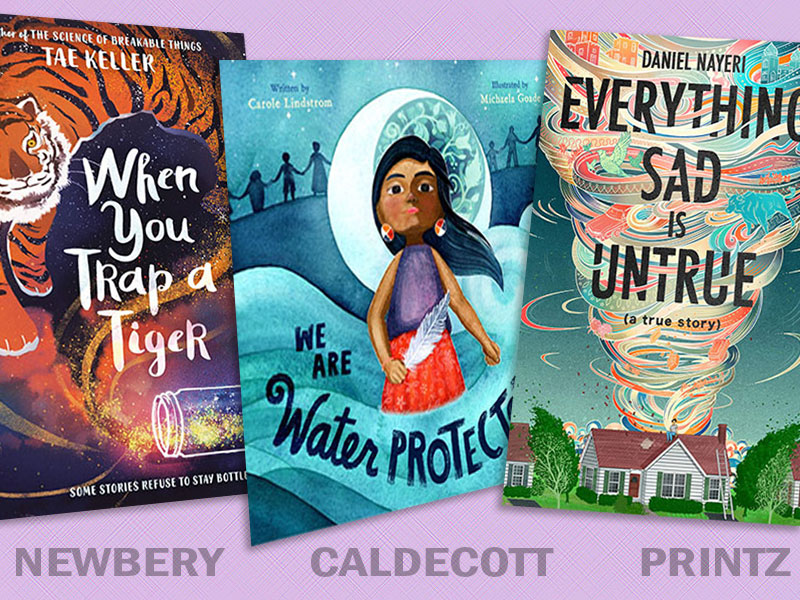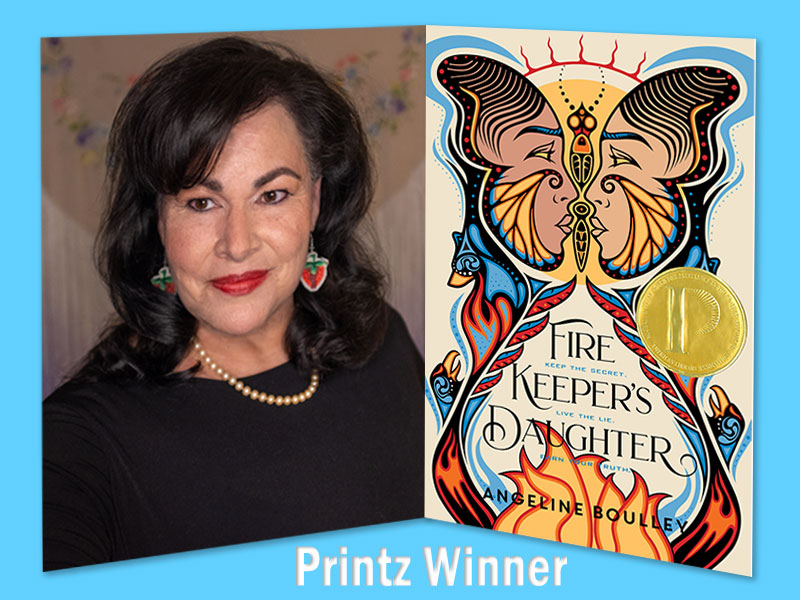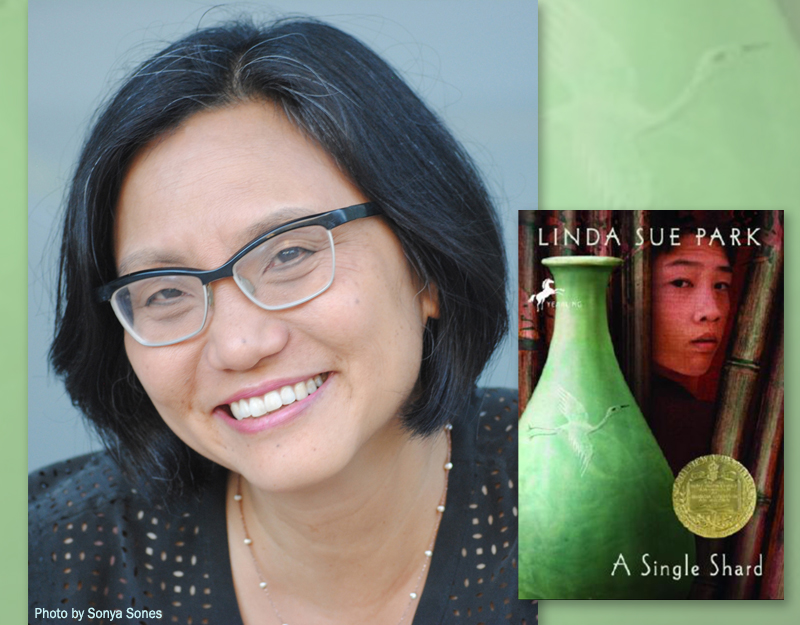Hey Kiddo
 Last week, Roxanne talked about a couple of graphic novels that have Newbery potential. She talked through how we can “read pictures” and where that fits into Newbery Criteria.
Last week, Roxanne talked about a couple of graphic novels that have Newbery potential. She talked through how we can “read pictures” and where that fits into Newbery Criteria.
Another graphic title I want to discuss is HEY, KIDDO, by Jarrett J. Krosoczka. It came out just about a week ago, so many may not have had a chance to read it yet, but I strongly encourage you all to get your hands on it. I read an advanced copy, so it may have changes to the art, and I’m waiting for my hold on the final copy.
It’s getting a lot of attention. It is a National Book Award finalist and got a review in the New York Times. I also think it is absolutely a book worth discussing in terms of Newbery possibilities.
ADVERTISEMENT
ADVERTISEMENT
I’m not going to get into discussion of age appropriateness. The title definitely falls into the up to and including age 14 age restrictions of the criteria.
HEY, KIDDO, is not fiction. It is, in fact, Krosoczka’s brutally honest memoir of being raised by his grandparents and about his relationship with his mother, who is an addict. It is also a story about how art helped save him.
The art in this book is exactly right for the story. It is imperfect. It is muted. It is raw. It is real. It is chaotic, as was the author’s life.
What, though, of the words themselves? For a graphic novel to work, the text must be tight. Each line must have meaning, whether expository or dialogue, that moves the story forward because you only have so much space to work with in terms of words, with so much taken up by art. The text in HEY, KIDDO walks the line perfectly. Krosoczka incorporates longer paragraphs of text to give background and move the story forward, and uses dialogue, alongside illustrations, to demonstrate character. He also manages to inject just the right amount of humor to keep the story from being too dark to withstand.
One of the things I really appreciate about HEY, KIDDO is that it tells a dark story to a young audience in a way that is completely appropriate, but without dumbing down the subject matter or talking down to the reader. The author allows each child to understand as much of the subtleties of the story as they are ready for. He assumes that his audience is bright enough, knowledgeable enough, and strong enough to take in his story, and he tellss it in a way that can work for so many young people with different experiences of their own – those who can relate to his experience as well as those who can’t.
Ultimately this book is one of challenge and triumph, a great coming-of-age story.
Filed under: Book Discussion
About Sharon McKellar
Sharon McKellar is the Supervising Librarian for Teen Services at the Oakland Public Library in California. She has served on the Rainbow List Committee, the Notable Children’s Recordings Committee, The Arbuthnot Honor Lecture Committee, and the 2015 Caldecott Committee. You can reach her at sharon@mckellar.org.
ADVERTISEMENT
ADVERTISEMENT
SLJ Blog Network
2024 Books from Pura Belpré Winners
Passover Postings! Chris Baron, Joshua S. Levy, and Naomi Milliner Discuss On All Other Nights
Winnie-The-Pooh | Review
Parsing Religion in Public Schools
Crafting the Audacity, One Work at a Time, a guest post by author Brittany N. Williams
ADVERTISEMENT








This is one I can get behind for all the reasons Sharon delineates. It feels comfortably within the age range for me, more so than other books we have debated in the past. I have to go back and reread it (and I too read an ARC), but I thought the presentation of drug abuse was masterfully done for this audience. As Sharon notes, it is so respectful of them, not talking down to them, but also presenting it in a way that each reader can take in at whatever place they are at. Nothing felt too much for them to manage. The occasional moments of humor, times when things were good, the wonderful relationship with the very real grandparents (I especially loved the characterization of the grandmother), and more — outstanding. Again, I have to look at it again, but here the text seems out front with the design and art supporting it.
I read this in one sitting last night. It’s risen to the top of my list – for both the Newbery and the Printz (and, if I’m being totally honest, the Sibert and the YALSA Excellence in Nonfiction).
To me, HEY, KIDDO achieves what a lot of other graphic novels we’ve discussed haven’t: the power of the words matches the power of the images, so there is no way to divorce the two from each other. They rely on each other.
The storytelling here, for me, is incredibly strong. HEY, KIDDO is the rare memoir that doesn’t rely on sentimentality or sympathy to tell its story. Krosoczka could *easily* felt sorry for himself or tugged at the heartstrings, but instead tells an incredibly emotional story without himself being emotional. This is a huge feat.
Krosoczka nails each of the Newbery criteria and then some: the plot is artfully, poetically constructed; the tone is firmly established, the theme subtly delivered, the characterization seamlessly rendered. Monica, above, noted the grandmother, and I agree with her, but you get glimpses of other people in just a few sentences: the fastidious art teacher, the boy-next-door best friend, the comic books instructor – all of them brought to life not only by the images but by the words, which is where, again, HEY, KIDDO sets itself apart from other graphic novels we’ve discussed.
One of my friends pointed out that there were gaps in the narrative, but that makes perfect sense to me. If Krosoczka can’t remember things (for example: the bloodied people who take a bath in his mother’s house), he can’t really write about it. But the narrative gaps make even more sense in the context of the book: he’s a child, and a child brought up in a chaotic home environment can only make sense of so many things.
This is not an easy book. Far from it. And yes, there are a few swear words and tense situations that will inevitably bring up the “age” question, but for me, it’s firmly in PG-13 territory (and therefore, firmly in both children’s and YA categories).
I also read the whole book yesterday, and was deeply impressed. Joe’s comment about how the book tells an emotional story without itself being emotional really helped me realize one of the things I appreciated about the book: it trusts its readers. The impact of events on young Jarrett is clear, there isn’t a need to over-emphasize. This is just what happened, a lot of it wasn’t great, some of it was, and all of it was something that had to be lived through.
I know people keep focusing on Shirley, but I think it’s with good reason. We need more representation of complicated people like her, capable of being racist or just mean, unable to express emotions easily and so often lashing out, but at the same time also a supportive figure who loves deeply. I know she was a real person, not an invented character, but even so, it takes great skill to capture so clearly and sharply character traits that truly bring the person on the page to life.
Just finished this one and agree with comments above. Sharon points out how: ” Krosoczka incorporates longer paragraphs of text to give background and move the story forward, and uses dialogue, alongside illustrations, to demonstrate character.” And that interplay between dialogue and description works so well! In the “Pen to Paper” chapter (143-155), for example:
– Dialogue: Grandpa tells Ja he can take a class at the Art Museum (“Doesn’t matter how much it costs or what day it’s on – we’ll get you there.”)
– Text: Explains why the Art Museum class is important
– Dialogue: Introduces a great teacher (Mark)
– Text: Describes how Mark teaches
– Dialogue: Shows kids reacting to Mark’s ideas “Violence! What about just straight-up violence?!”)
– Text: Ja studies How to Draw Comics the Marvel Way
– Dialogue: Mark guides him a different way (“You have a really good thing going for you.”)
– Text: Ja realizes he needs supplies
– Dialogue: Grandpa gets him the stuff (“You look like a natural, kid.”) And the family has fun with fortune cookies (“‘Today is tomorrow’s yesterday.’ What in the hell does that even mean?” (Grandma of course))
– Text: Ja tapes his fortune and starts working on his comic.
It seems like such a simple, natural sequence, but it conveys so much in terms of character and theme. The illustrations certainly contribute. The larger, darker panel showing Ja at work(155) has a visual impact, for sure. But it’s the carefully constructed sequence leading up to it that builds our understanding of how meaningful that moment is.
This is easily in my top five books of the year. I can endorse it for Newbery, but because I live in elementary world I’m not going to give it any of my nominations. Simply, for the self-serving reason, that I won’t be passing it on to my students. If it wins, I won’t be personally sad. It is in the range, but I will be sad for my Newbery Club who won’t know it. I will bring my own copy to the announcement just in case.